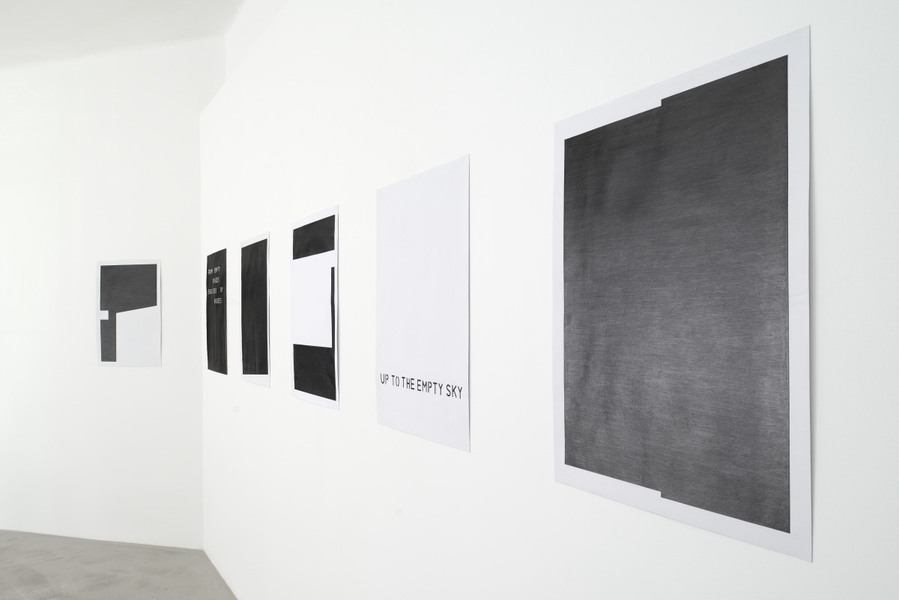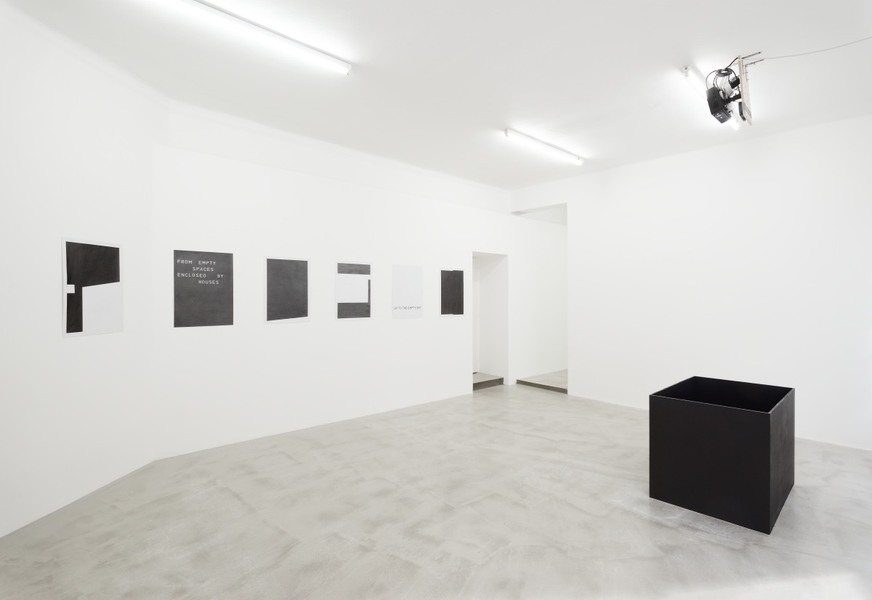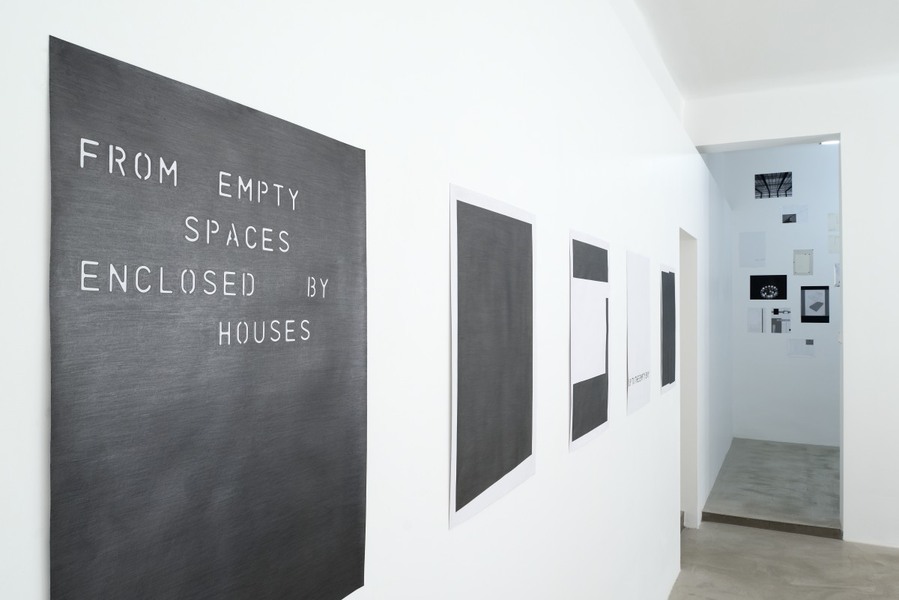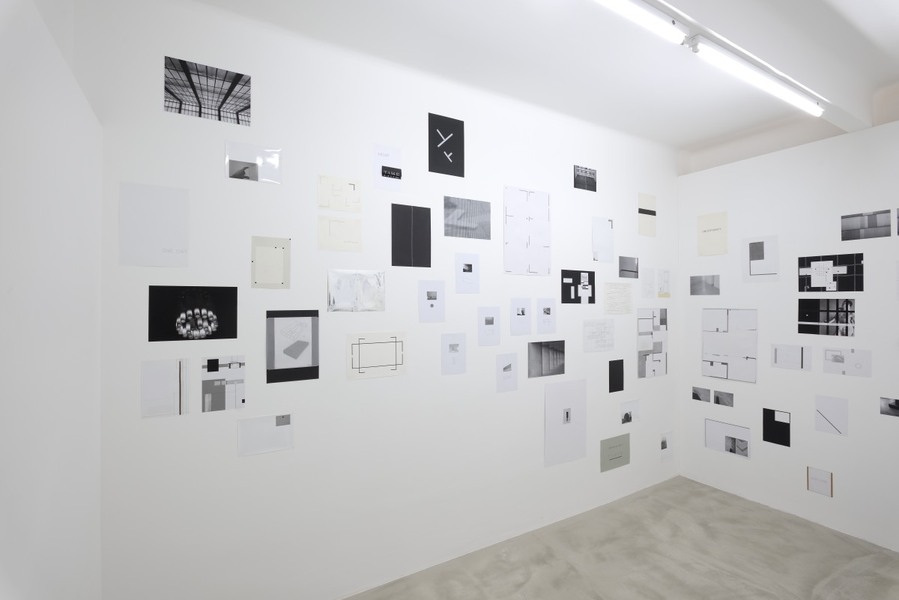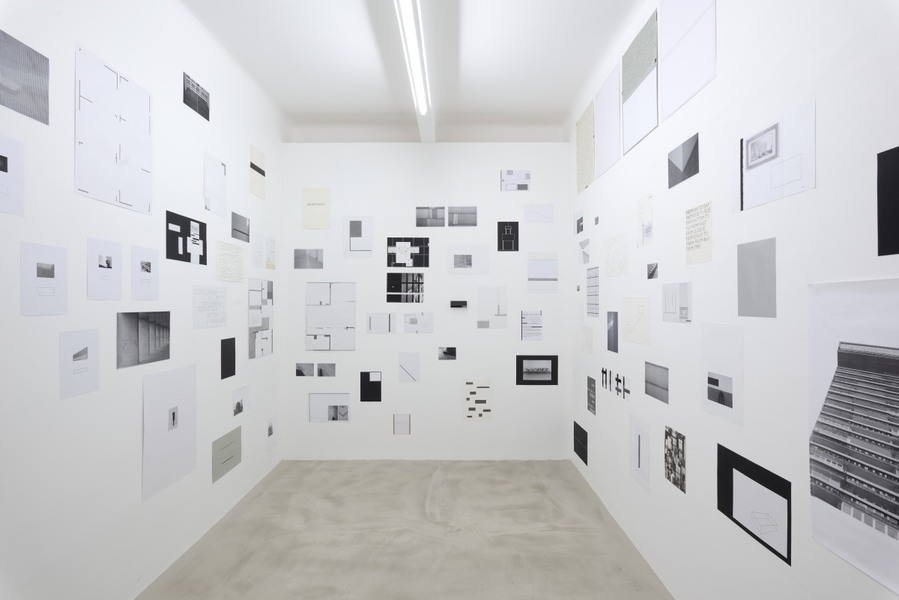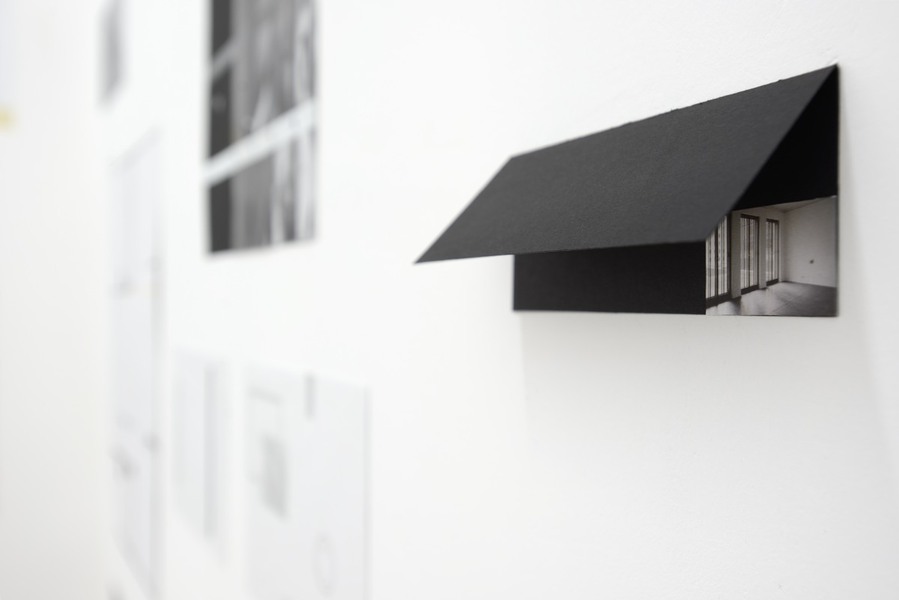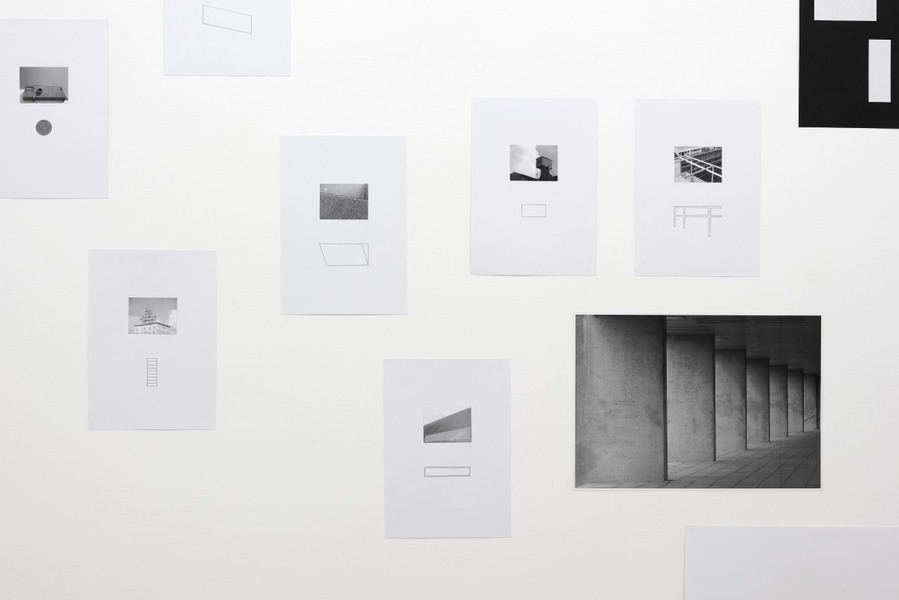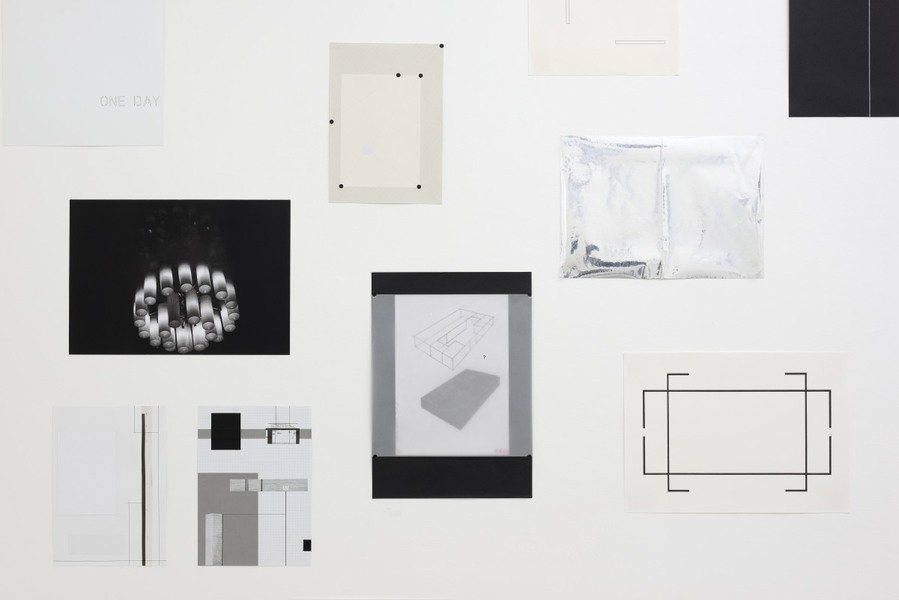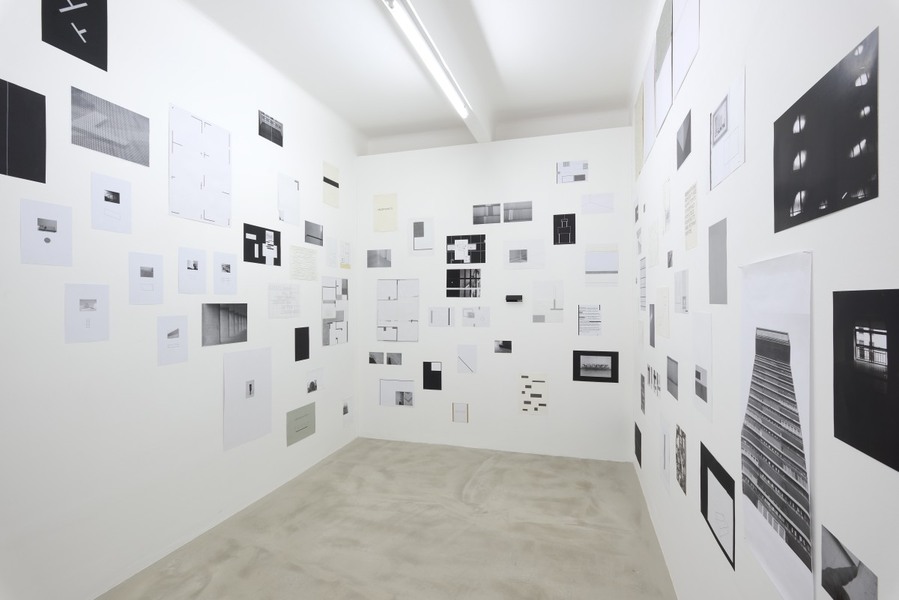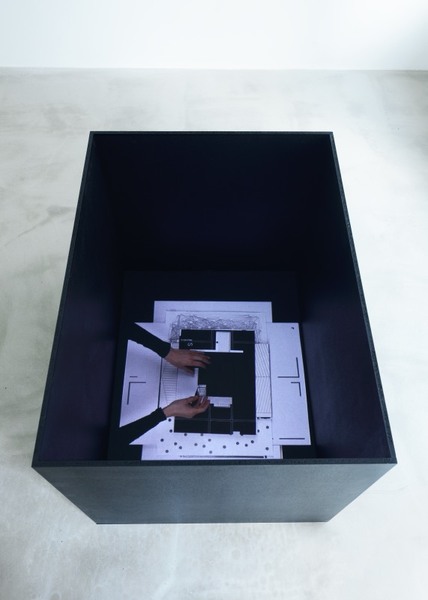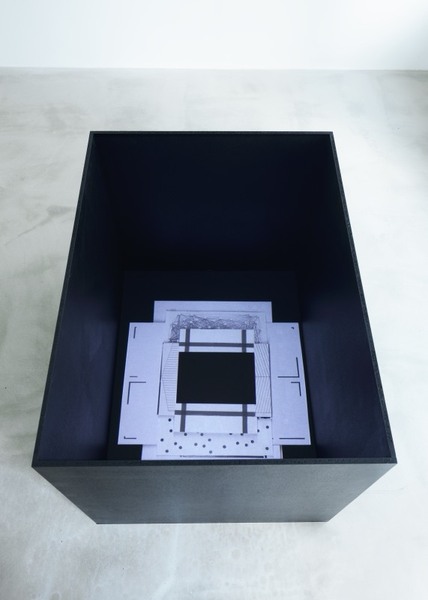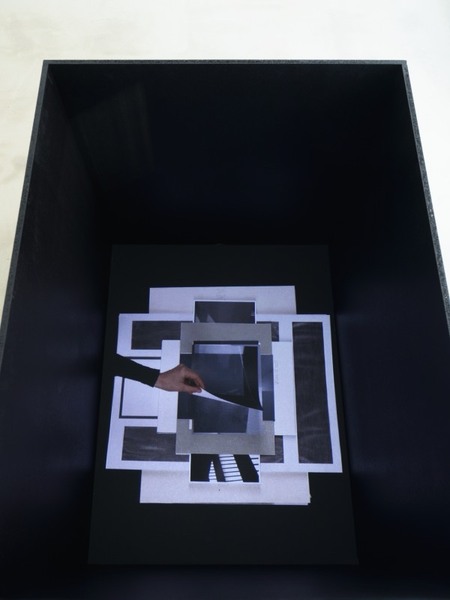Michal Škoda has been working on his cycle Time and Environment since 2011 (besides his even more personal Records, authorial books and other projects). Created during a regular and orderly work in a studio, the cycle consists of records serving as a visual journal. The mainly black-and-white drawings, collages and photographs are minimalist in their form, however, they still have material and even haptic qualities; the visual expression is sometimes supplemented or substituted by text. “Everydayness” is what the artist calls the elements out of which he composes a whole. It is represented primarily by means of reflection of architecture, or as the case may be, the imprint of man (artist) in space. The architectonic space is not explored critically to show its limits or prove the currency of the modernist heritage. It is timeless yet anchored in an aesthetic which captures clean, generous buildings painted white or constructed out of raw concrete. To Michal Škoda, architecture is a place of reflection. He is reflecting on his position among others and on the delimitation within an environment determined for man. In his cycle, he transforms the “practical space” of everyday life into the “representational space” (Henri Lefebvre) on the basis of movement, observation and experience. Besides space-environment, the cycle also deals with two kinds of time. On one hand, there is the time of creation, which can even become a certain kind of meditation to the artist when creating demanding drawings; on the other hand, there is the time of viewing – leafing through. Both are intimate and unrepeatable; both to the artist and the viewer. To capture the sense of looking at the works on paper, the exhibition includes a projection of photographs of the individual components of the cycle made by Alexandra Vajd and Hynek Alt. An anonymous hand is gradually uncovering the chronological leaves created in the course of a year as if revealing sediments or archeological layers. Is it possible to convey the sense of the passing of time and can it be reconstructed at all? How much is left, how much is lost, has something new been created?
Terezie Nekvindová
PROPROJECT
TIME AND ENVIRONMENT
Record 2011 / 2
A project representing a natural continuation of my long-term tendencies. At this moment / more or less / without a time limitation with supposed / partially varied / output in the course of its duration Movement in real time and environment / as well as while travelling, experiencing, comparing…../ Time and mode – of understanding space – perception of space Everydayness and its traces. A certain archive of memory / thought / in accordance with a certain analysis of environment / all it provides / – by means of most limited tools…/ paper, collage, photograph, drawing, print…. / creation of records Contrast of simplicity and multiplicity of levels of interpretation Relation between the real and the artificial.—- There is the question of authenticity of what we see, experience, of what speaks to us, influences us… Space / environment../ – how to perceive three-dimensionality / how to perceive two-dimensional space – perception of its flatness, distinguishing of surfaces / how to organize / randomly / and categorize the sensual perception of surfaces and colours etc……\
Relations “between” – looking – perception – depiction. Creation of physical experience in accordance with a memory / mental spaces /
I am interested in the journal character of a record, with the gap “between” – a thing and our perception of this thing / which can be a piece of paper as well as monumental or minute architectures. What creates an environment, what disturbs it. Subjectivity in time and environment – concreteness versus fiction. Notion of image and word, space and thought, exhibition and book
Creation of space with an intervention calling for reflection, not an answer but a record of “fact” – thoughts, doubts and questions

